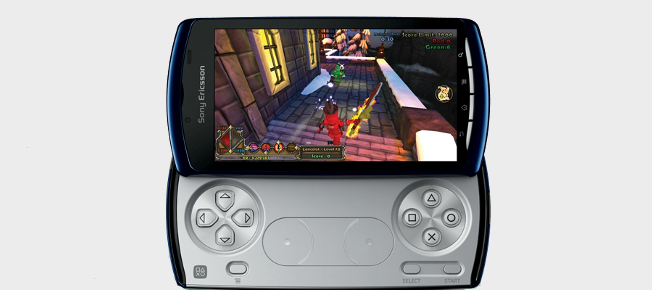Did you know that the computer mouse is about 45 years old? You probably don’t even give your mouse a second thought, as it sits there on your desk. Most of us have come to rely on that simple little device. But the demise of the mouse may be imminent. Let’s take a look at some of the emerging technologies that may soon replace the trusted mouse.
5. Touch Screen Technology: It Takes Just a Touch
Image via Flickr by bark
The technology that allows you to touch the screen to control your smart phone or tablet has been in place for quite a while. In fact, the origin of touch screen technology can be traced all the way back to the late 1940s, to the invention of touch-sensitive music synthesizers.
The first modern touchscreen as we know it was invented in the mid-1960s by E.A. Johnson of the Royal Radar Establishment in England. The tablet itself was patented in 1969, but it could only detect a single touch at a time. While this means that touchscreens are actually somewhat older than the mouse, the technology has only more recently begun to realize its full potential.
As we all know, touch screens enabled the proliferation of “smart” devices with which we’ve all become familiar. Touch screen technology allows users to simply touch the screen of the table or phone to perform tasks. Pinch to scroll or zoom, touch to open apps or links just by simply touching the screen of your device. We’re already seeing this technology’s effect on gaming controls, specifically with tablet and smartphone apps. Fans will also note that Nintendo has also been utilizing this technology.
And with the sale of tablets and smart phones having exceeded PCs every year since 201l, the touchscreen is a strong contender for rendering the mouse obsolete.
4. Eye-Tracking Technology: Do the Eyes Have It?
We’ve all seen those movies where a character gains entrance to a secure facility simply by having his or her eye biometrically scanned by a computer. New technology is emerging now, however, that actually allows your eye to control your computer or gaming console.
But while the technology is new, the research upon which eye-tracking is based traces back to the late 1800s, with the discovery that reading is based on a series of short stops and rapid movements. Not until the 1980s, however, did researchers begin using eye-tracking for direct human-to-computer interaction. They have since developed a complicated system that relies upon a geometric interface between the human pupil, infrared light, and what is called a “corneal reflection.”
As a result, eye-tracking technology allows computers to respond to the movement of your eyes via sensors, and will perform tasks such as scrolling through a page you’re reading, open media files, and even play games.
Without a doubt, this technology could be an godsend for disabled computer users and gamers. It also could eventually be the reason your mouse goes in the trash can for good.
3. Facial Movement Recognition: Smile for the Camera
Software programs such as Visage and the iMouse are combining web cams and technology to create interfaces that uses facial movements to control the mouse. Imagine just moving your head and seeing the mouse pointer moving across your screen. Blinking your eyes will trigger events such as left or right clicks.
Another good example of this technology in action is the Samsung Smart Scroll, which uses facial movement recognition and tilt to determine what you’re reading and when to scroll to the next page.
Facial recognition also has features allowing you to provide extra security to your computer. Your computer will be able to recognize you as an authorized user. Some experts have speculated that future iterations of this technology might use even more minute facial movements to control your devices in a seemingly telepathic capacity.
2. Motion Control: Put Your Hands in the Air and Wave
Technology companies such as Leap Motion and Rare have created devices and technology that lets you control your computer through hand motions. Motion sensor input devices are already making their way into users homes.
Perhaps the most significant example of this technology is Microsoft’s Kinect device for the Xbox360 game console and Windows PCs. Users employ combination of gestures and vocal commands to interact with their devices via a peripheral camera. Released in 2010, it’s among the all-time fastest selling electronic devices for consumers. And its technology is being used across a multitude of fields, including physical therapy.
With newer versions of this technology, you can use the same motions you would on a tablet or smart phone such as pinching or expanding to increase font sizes. You can create a Google Map route by simply tracing the route in the air with your finger.
This means you don’t need a mouse, a stylus, a game controller, or other hardware device to control your computer—you don’t even touch the screen.
1. Brain Waves: Just Think About It
Really, seriously. There are devices out there now that are using brain waves to control computers. Thanks to an Australian company called Emotiv Systems, users wear a neuroheadset and then simply think and subsequently control their computer.
These brain-computer interfaces use EEG-style technology to interact directly with their computers. Whereas the aforementioned facial recognition could develop to a point where it is almost telepathic, this technology essentially is telepathic in the way it works.
This is yet another a great technology for gamers and those who may have mobility issues. And, of course, it could ultimately lead to the ultimate death of outdated mouse technology.
While many in the technology arena are reluctant to say that the mouse will disappear anytime soon, these five amazing pieces of technology may quicken the demise of the mouse. What other gaming applications could you envision for these technologies?
Resource links:
http://www.ecnmag.com/articles/2013/01/why-computer-mouse-will-soon-be-obsolete
http://tech.blorge.com/Structure:%20/2008/07/17/death-of-the-computer-mouse-wii-iphone-show-a-different-future/
http://www.digitaltrends.com/computing/death-of-the-mouse-how-eye-tracking-technology-could-save-the-pc/
http://news.bbc.co.uk/2/hi/technology/7508842.stm
Author Bio:
Jake Fisher is a Culture Geek from Tampa, FL with a healthy love of all things tech, gaming and beer. A firm believer that Geeks are the modern Renaissance men (or women), he seeks to show the positive nature of Geek culture. He gets online with http://www.clearinternetservices.com/. Follow him @jakemfisher
© 2013, The Indie Mine. All rights reserved.





